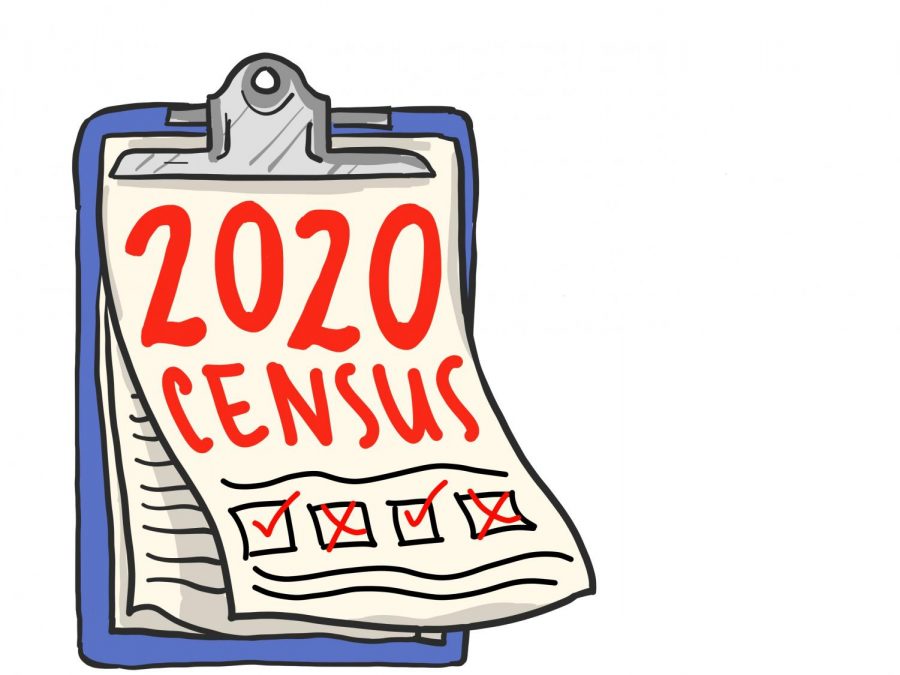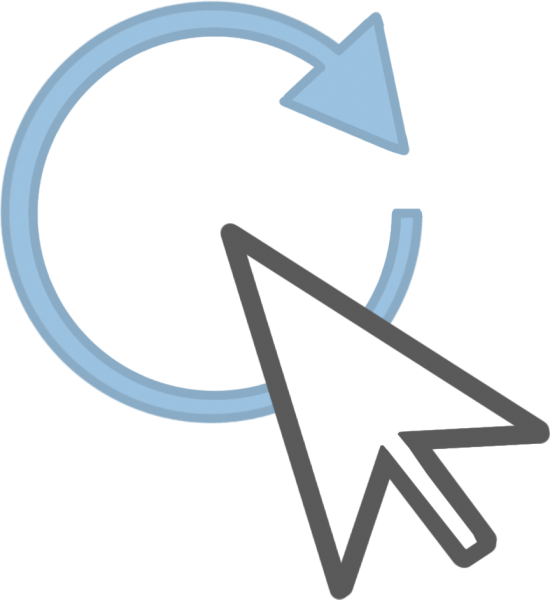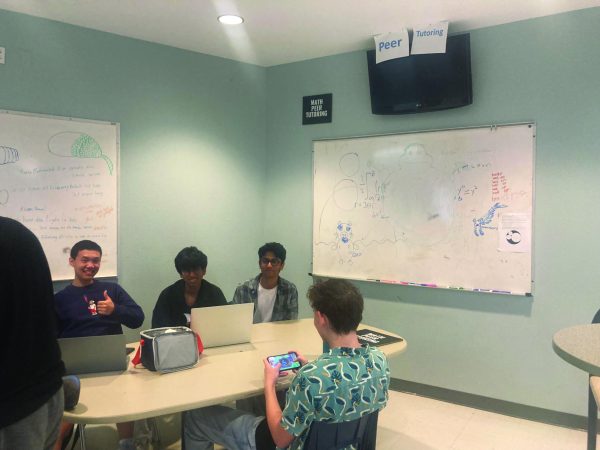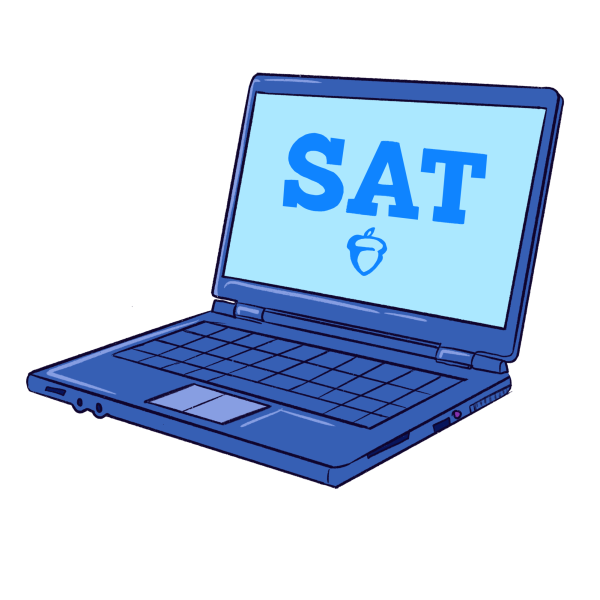Conducting the Census During COVID
October 6, 2020
Every ten years in America, a decade passes. Well, that’s not all that happens, according to the senior media specialist for the U.S. Census Bureau, Douglas Loveday.
“Normally, the Census Bureau is a small bureau within the Department of Commerce, but when we ramp up for the census, we become, really, the largest federal deployment of employees outside of wartime,” Loveday said.
The decennial (every 10 years) census is conducted by enumerators, people who go door to door and ask people the questions on the census or by self-response. This year’s census is special as it is being conducted amidst a global pandemic. However, the show must go on as the census is taken, in part, to apportion out the 435 seats in the House of Representatives as mandated by Article 1, Section 2 of the U.S. Constitution. According to Loveday, the census is important, especially during a pandemic like COVID-19, because it ensures the state receives the federal funds it needs.
“It also funds things like infrastructure, road work, water utilities, emergency response,” Loveday said. “And then, also there’s a lot of federal money that comes back to us and helps fund programs and healthcare. During a pandemic like this, it’s just so important that we get a good, complete, accurate count because we want to make sure that we’re getting the proper funding that we’re supposed to be getting here in Texas.”
The census can also give insight to people in the private sector as the Bureau releases the statistics taken from the census publicly. According to AP Statistics teacher Kevin Crow, the data gained from the census can be a big help to businesses.
“Demographic information does not do a very good job of saying things about an individual person, but when you are talking about a group of a million people, and you have demographics, you can very accurately say,” Crow said. “You can break them down into groups, and say, ‘I expect these kinds of income and these kinds of tastes.’ That is very useful to marketing.”
According to Loveday, these kinds of statistics can also be relevant to a private entity when trying to find a place to build new infrastructure. He said the census provides data that could be useful in choosing an area to develop.
“Take a corporation who wants to build a manufacturing plant with a lot of employees,” Loveday said. “They don’t want to be in Austin; they want to be outside of the city limits, but they’ll look and see where all of the population centers are that are within commuting distance to their plant, so they can have a workforce that can commute that certain distance and make sure they don’t go out too far and set up shop and be in the right place.”
In spite of the coronavirus pandemic, there have been factors making the census easier to carry out. This year marked the first time citizens could respond to it by going to a website or calling a phone number.
“That’s always the push,” Loveday said. “We want to get as much self-response as you can. That limits the number of enumerators, or census takers, that we have to go out and send out into the field to visit those that haven’t self-responded.”
These methods were especially convenient during a pandemic, even though these new data collection programs were planned well before COVID-19, according to Loveday. However, according to enumerator Lydia W., some of the technologies used by the enumerators slowed down the process at times. The application that enumerators used is almost an exact copy of the paper form, but that doesn’t always translate well to a digital device.
“If someone doesn’t know or refuses to answer, I have to click another button,” Lydia said. “I have to have two clicks to make the option appear that they didn’t know or refused when that could have been an option from the start. The way that the questions were organized, it would make sense on paper, but going back and forth is time consuming.”
According to Loveday, COVID-19 came with its own problems as well, especially when conducting field operations. He said the Census Bureau has to take into account both local and federal guidelines when conducting the census which made their operations dependent on what everyone else in an area was doing.
“There was an operation that we were going to just start in the field, and literally the day after is when COVID restrictions came down, and we had to put those on hold.” Loveday said. “But since July, all field operations are up and running, so our census takers are out there in the field right now.”
According to Lydia, dealing with the people who are answering the census can also be a challenge, especially if they’re outright hostile.
“Not everyone understands the importance of the census, so you get people telling you to get off their property,” Lydia said. “But unless they make an overt threat, then they’re not considered a threat really, just something to be aware of the next time the next person comes around to give it a go.”
Whenever she meets a person like that, Lydia said that she just tries to empathize with where they’re coming from and reminds them why the census is so important. In addition, she said the Census Bureau has also rolled out an incentives program for enumerators.
“If I had a certain closure rate, three cases every four hours, that were completed and you worked a certain number of hours a week, then you could earn 50-100 dollars on top of what you made,” Lydia said, “because it’s often part-time job for people, but they really wanted the people that they had trained to make the most of it.”
While enumerating the decennial census, the Census Bureau has many smaller operations that feed into it. For example, the operation done to count people experiencing homelessness is almost completely separate from the one done to count people residing in homes, according to Lydia. Another is called the group quarters count, according to Loveday.
“We go out at a special time and we’re counting facilities, kind of like nursing homes, we actually have to count votes in prisons, and so that’s all under the group quarters count,” Loveday said.
After enumerators like Lydia W. are done collecting statistics, that data is compiled and apportioned out across all seats of the House of Representatives. Then, that information is presented to the president, who has to bring it to the clerk of the House of Representatives. Loveday said that the data will then go from there to state government officials.
“Then we send that data to the states, and it gives them the data about the populations within their state, and then they use that data through their state legislatures to do their redistricting for state and local offices,” Loveday said.
In addition to their counting operations, the Census Bureau also conducts a survey called the American Community Survey (ACS) every year. According to Dr. Catherine Calder, the chair of the Department of Statistics and Data Sciences at the University of Texas at Austin, the ACS is much more detailed than a decennial census, but it uses samples of respondents rather than doing a full count.
“That uses more advanced statistical methods and sampling methods to be able to survey a sample of individuals and use that to infer characteristics of the population,” Calder said.
One benefit to the ACS is that, instead of every 10 years, it is taken every year. This means that the statistics from the 2019 ACS are going to be more relevant than the census data from 2010, according to Crow. In addition to the ACS, the Census Bureau does a calculation for every decennial census to determine the undercount or overcount of that year’s census. This number tells the Bureau whether or not the census counted more citizens than there are (overcount) or fewer citizens (undercount).
“In 2010, there was 0.01% overcount, some people were double counted, in 2000 there was a 0.49% overcount and an undercount of 1.61% in 1990, so those margins are getting really, really small,” Crow said.
According to Calder, overcounting tends to be more rare than undercounting. However, that doesn’t mean it never happens.
“If you have a population that is somewhat transient like college students, that is when you might expect to see overcounting, just because people are in two places when the census is being conducted,” Calder said. “Maybe living at home in the summer or dorms or something during the fall.”
The statistics gleaned from the decennial census can also be used in research. According to Calder, these numbers can show which places are growing in population and which ones are shrinking.
“I’ve done some work on looking at disease counts,” Calder said. “So for instance, how many people have a particular type of cancer, say, at the county level. In order to be able to interpret that data or to be able to count or to determine rates of cancer, so number of cases out of how many people live in that county, you need the census to be able to get that denominator to calculate the rate.”
According to Crow, this data can also show the precise demographics of certain areas. This is especially important when talking about an election, he said.
“We are going into an election, and I am sure everyone is interested in the demographics of cities and different places and how well that can predict an election,” Crow said.
As of Friday, the 2020 census will end on Oct. 31. Loveday highly encouraged anyone whose household has not responded to do so as soon as possible.
“We want everybody who has not responded yet to please not wait for a census taker to come knocking at your door. Go online, 2020census.gov, and it’s very fast, and it’s easy, and know too, it’s safe and confidential,” Loveday said. “When this data is shared with the president or pushed to the states, it has been completely stripped of personal, identifiable information. It’s just numbers.











